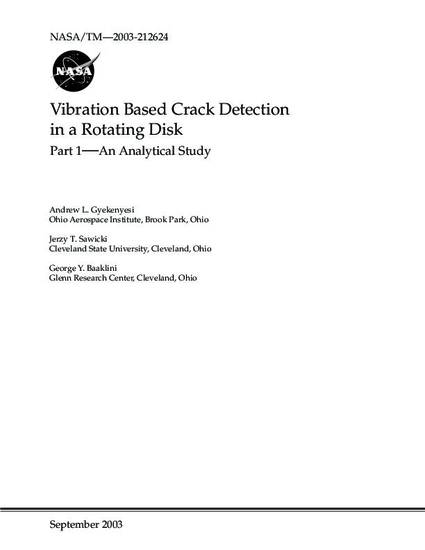
This paper describes the analytical results concerning the detection of a crack in a rotating disk. The concept of the approach is based on the fact that the development of a disk crack results in a distorted strain field within the component. As a result, a minute deformation in the disk’s geometry as well as a change in the system’s center of mass occurs. Finite element analyses were conducted concerning a notched disk in order to define the sensitivity of the method. The notch was used to simulate an actual crack and will be the method utilized for upcoming experiments. Various notch sizes were studied. The geometric deformations and shifts of center of mass were documented as a function of rotational speed. In addition, a rotordynamic analysis of a 2-bearing, disk and shaft system was conducted. The overall response of the system was required in order to design the experimental system for operation beyond the first critical. The results of the FE analyses of the disk indicated that the overall changes in the disk’s geometry and center of mass were rather small. The difference between the maximum centrifugal radial displacements between the undamaged and damaged disks at 8000 RPM was 0.00014 in. for a 0.963 in. notch length. The shift in center of mass was also of this magnitude. The next step involves running experiments to verify the analysis.
